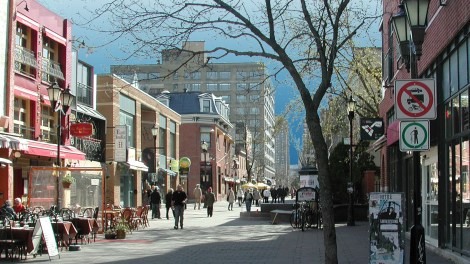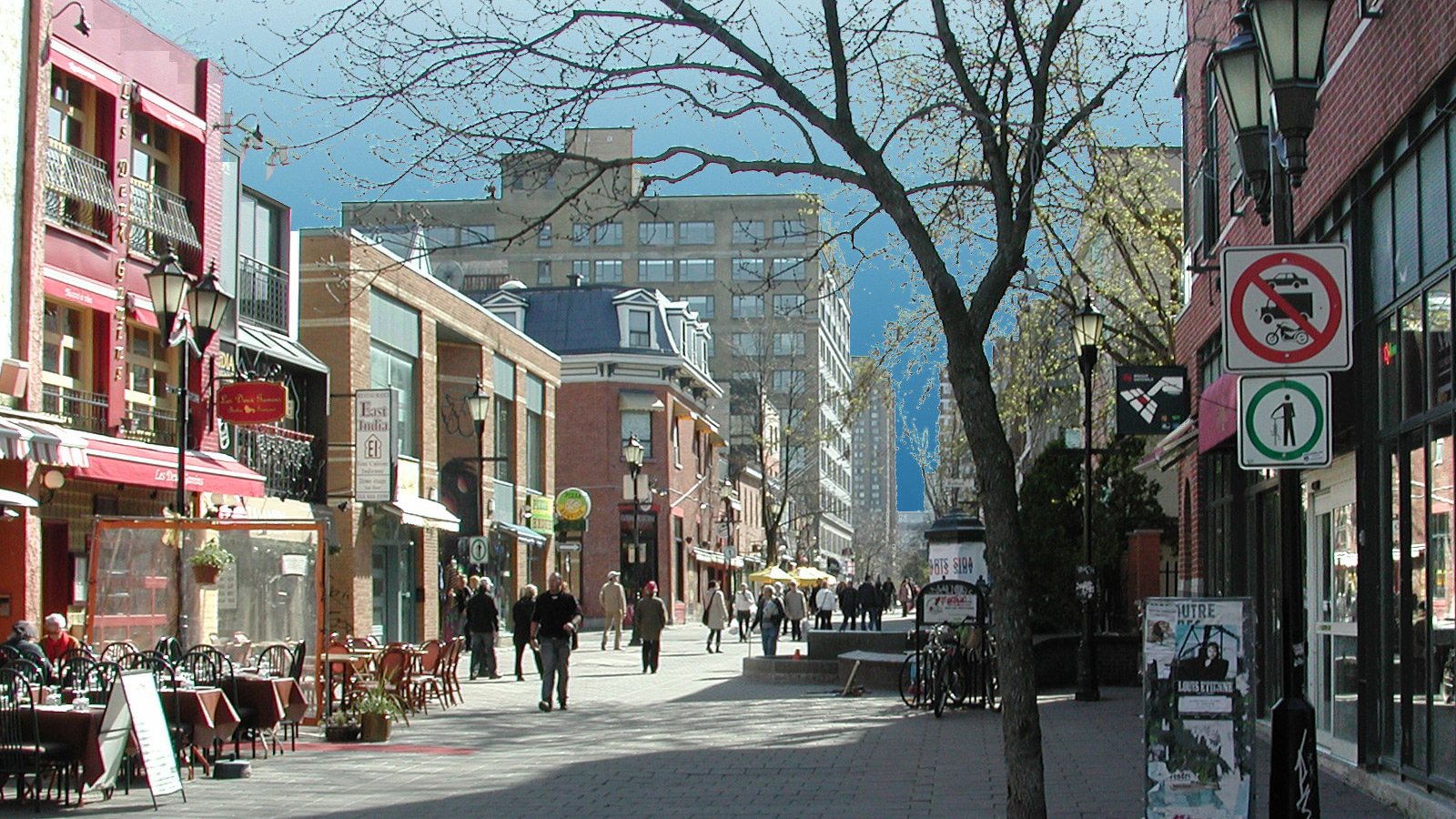
Urban GrammarAll of the people in this picture are Democrats.
The wonkosphere is going wild over the Pew Research Center’s new report on increasing partisan polarization. It shows that liberal and conservative Americans are more segregated than ever: liberals are now all Democrats, conservatives are all Republicans, and both groups — although conservatives much more than liberals — increasingly tend to socialize and get their news only from one another. Conservatives are also found to be totally hostile to political compromise.
To anyone following political news, these findings mostly just reinforce what we already knew. One of the starkest divisions stands out, though, because it is on a topic that is seldom measured or discussed: ideological divisions over walkable urbanism versus suburban sprawl.
Pew asked whether respondents would rather live in an area where “the houses are larger and farther apart, but schools, stores and restaurants are several miles away,” versus one where “the houses are smaller and closer to each other, but schools, stores and restaurants are within walking distance.” The country is evenly split, with 49 percent choosing the former and 48 percent the latter. But the political divide is dramatic: 75 percent of “consistently conservative” respondents prefer the suburban sprawl model, and only 22 percent prefer the walkable urban design. Among “consistently liberal” Americans, the numbers are reversed.
While voting patterns have long showed a correlation between liberalism and density, the relationship between urban planning preferences and political ideology was not necessarily so obvious. Maybe city dwellers were liberal for the same reasons they did not live in the suburbs — because they are more often poor, non-white, and victims of discrimination — but that doesn’t mean they harbor an affection for density. Likewise, rural voters could just be conservative because they were more likely to work in natural resource extraction and own guns, not because they like having to drive everywhere.
But this poll shows that liberals actually do prefer walkability, and conservatives instead value space and privacy. There could still be other factors at play: As Bloomberg View’s Ramesh Ponnuru notes, larger families, who tend to be more conservative, might want more space. A bigger factor, I suspect, is that decades of white flight have led most Americans to associate density and walkability with racial diversity. That’s a plus for liberals, while to most conservatives it’s a minus. That’s why, when Republican politicians try to stoke racial animosity against President Obama, they use the code word “urban,” even when complaining about a program to benefit black farmers.
Clearly, though, the enormous discrepancy Pew found has to reflect some significant differences in attitudes about density and walkability themselves. If you think about what walkable urbanism and suburban sprawl offer, it makes perfect sense. Liberals care more about the environment, and it’s more energy efficient to live in smaller homes, take shorter drives, and have less need to drive at all. Denser, more walkable areas are more communitarian: Everyone invests in sidewalks and transit, people hang out on stoops and in shared public parks instead of private backyards. It stands to reason that conservatives, who hate sharing, would prefer to invest their money in bland little private lawns rather than a wondrous communal paragon like New York’s Central Park.
Liberals value diversity, integration, and interactions with different kinds of people more than conservatives do. In contrast, Pew found conservatives are more likely than liberals to say it’s important to them to live near only people who share their political values. Liberals also tend to be younger, more highly educated, and more cosmopolitan, and college-educated millennials are flocking to dense coastal cities.
From a policy perspective, the more important factor than the political divide about density is just its total popularity. Half the country wants to live in a walkable environment, but most of the country is trapped in car-dependent sprawl. That’s why neighborhoods that are walkable, well-served by mass transit, and perceived as safe are seeing their home prices skyrocket. Detached suburban homes isolated from shopping, offices, and transit are often more affordable because of massive government subsidies.
Even the tiniest efforts by the Obama administration to counterbalance those policies with support for transit-oriented affordable housing are met with implacable opposition from Republicans. Their 2012 platform had nothing to say about cities except to attack Obama for “replacing civil engineering with social engineering as it pursues an exclusively urban vision of dense housing and government transit.” A writer for National Review, the leading conservative magazine, even wrote a book claiming that Obama had secret plans to wage war on suburbia.
So ultimately the partisan divide on urbanism does matter. If the half of Americans who want to live in walkable environments were evenly spread across the political spectrum, some Republican politicians might be willing to introduce a little fairness into our housing and transportation policies.


